The 12 most beautiful villages of Tenerife: Guide to explore their charm and magic
Tenerife is home to some of the most beautiful villages, combining history, architecture and spectacular scenery. From Masca, with its imposing ravines, to Garachico, rebuilt after a volcanic eruption, each place offers a unique charm. San Cristóbal de La Laguna, declared a UNESCO World Heritage Site, and the picturesque La Orotava, are destinations full of tradition and beauty. The island invites you to discover these special corners where culture and nature meet.
Tenerife dazzles not only for its volcanic landscapes and ideal climate, but also for the beauty and authenticity of its villages. Spread between the coast and the interior, these corners keep the soul of the island: cobbled streets, traditional architecture, colorful squares and a deep connection with its roots.
Exploring the most beautiful villages of Tenerife is to delve into its history, its culture and its quiet and cozy way of life. An essential experience for those seeking to know the most genuine essence of the island.
- 1. Masca: The Pirate's Hideout
- 2. Puerto de la Cruz: The Tourist Pearl
- 3. Santiago del Teide: Natural and Cultural Beauty
- 4. La Laguna: History and Culture
- 5. La Orotava: Color and Tradition
- 6. Icod de los Vinos: The Millenary Dragon Tree and Wine Traditions
- 7. Garachico: History and Nature
- 8. Taganana: Nature in its Pure State
- 9. El Sauzal: Sights and Heritage
- 10. Candelaria: Center of Devotion
- 11. El Médano: The Town of the Wind, the Beach and the Good Rolls
- 12. Chamorga: Rural Authenticity
- 13. Access to map of points of interest
1. Masca: The Pirate's Hideout
Masca is a picturesque village located in a gorge, famous for its breathtaking views and intriguing history. This corner of Tenerife has attracted visitors drawn by its natural beauty and pirate legends.
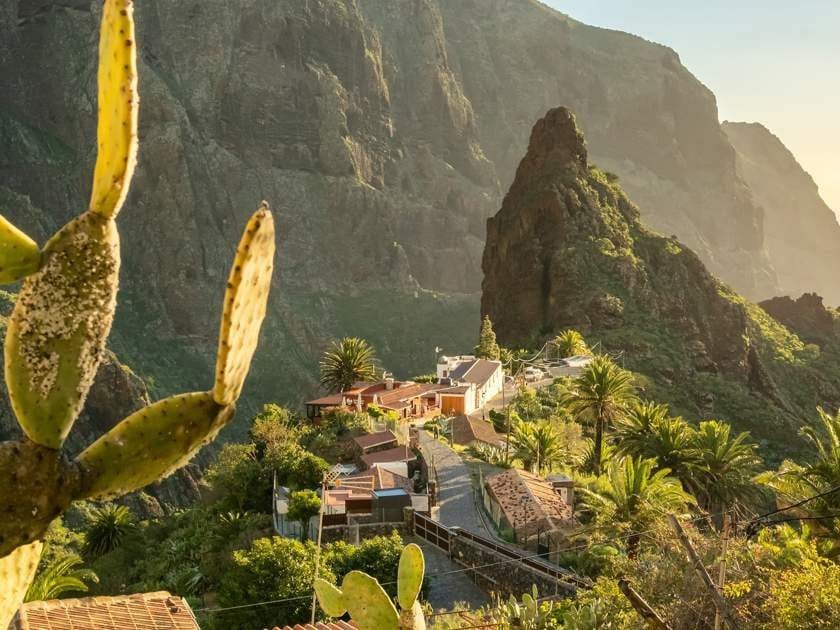
History and Legends
Masca has been, over the centuries, a refuge for those seeking to escape the law. Its unexplored location on the slope of the mountains made pirates choose this place as a hideout. Legends about its dwellers tell of hidden treasures and adventures full of intrigue. Today, these stories should be considered part of the local folklore that enriches the visitor’s experience.
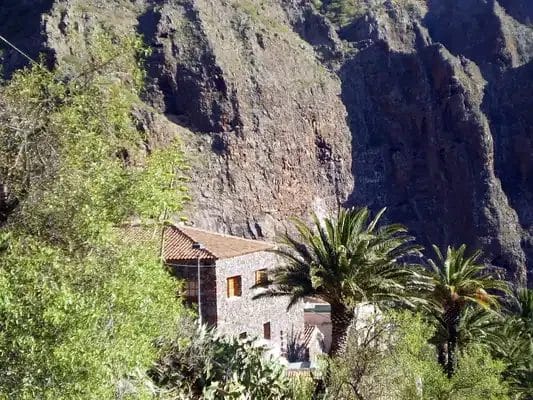
The Ethnographic Museum
The Ethnographic Museum of Masca is a space where you can learn more about the life of its ancient inhabitants. Through exhibits and objects, the museum shows the culture and traditions of this Canarian community. Visits to the museum offer a fascinating look at the history, customs and evolution of the village over time. Ancient tools, cooking utensils and traditional dress reflect Masca’s cultural heritage.
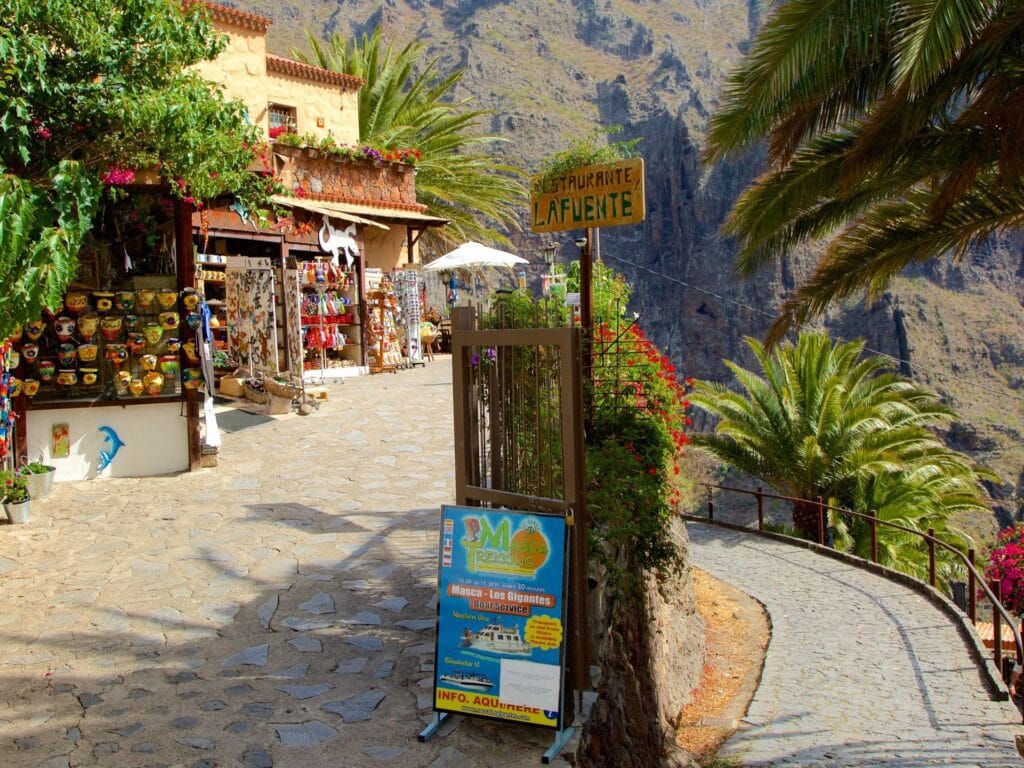
Hiking and Nature
The surroundings of Masca are ideal for hiking and nature lovers. This village is the starting point for several hiking trails that allow you to explore the breathtaking scenery of the area. The trails offer spectacular views and a direct connection to the local flora and fauna.
Cherfe Lookout
From the Mirador de Cherfe, you can enjoy panoramic views that extend to the ocean and, on clear days, you can see the nearby island of La Gomera. This viewpoint is one of the most photographed places in Tenerife, and is an essential stopping point for those who wish to capture the essence of the Canarian landscape. The exciting views it offers are worthy of admiration and spectacle.
Masca Ravine
The Barranco de Masca connects the village with a small beach, accessible only through a path that descends the mountain. This route is popular with hikers, who can enjoy nature at its purest. Along the way, the viewer is greeted by towering cliffs, lush vegetation and the sound of flowing water. At the end of the trail, the reward is a secluded beach that allows a well-deserved rest and contact with the sea.
2. Puerto de la Cruz: The Tourist Pearl
Puerto de la Cruz stands out as one of the most visited destinations in Tenerife. Its combination of natural beauty, beaches and rich cultural heritage make it a unique place for those seeking a varied and enriching experience.
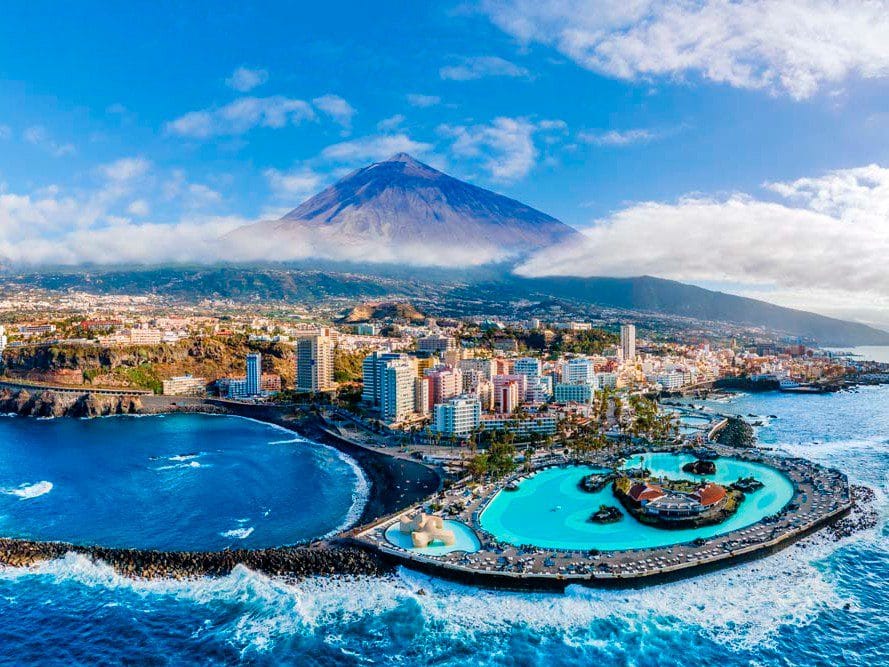
Main Attractions
Martiánez Lake
Lake Martiánez is one of the main attractions of Puerto de la Cruz. Designed by the famous Canarian architect César Manrique, this complex of lakes and pools blends seamlessly into the natural landscape. Surrounded by exotic gardens and sculptures, Lake Martiánez offers an ideal space for relaxation and leisure. Its waters come from the sea, providing the opportunity to enjoy a refreshing swim in a unique environment.
San Felipe Castle
Located by the sea, the Castillo de San Felipe is an emblematic fort built in the 17th century. This historic site, which originally had the mission of protecting the coast from corsair attacks, today allows visitors to enjoy a leap into the past. With architecture that reflects the military influence of the period, the castle is perfect for strolling around and taking in spectacular views of the Atlantic Ocean. Cultural exhibitions and events are held here, making it a vibrant spot in the town.
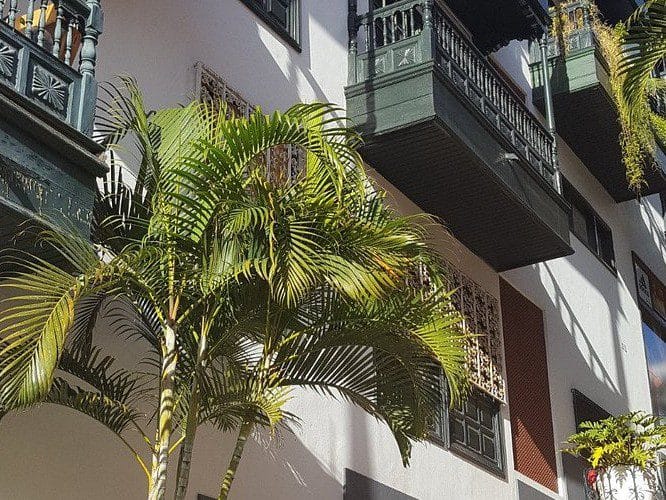
History and Culture
House of Tomás Iriarte
The House of Tomás Iriarte is a building that pays homage to the illustrious Canarian writer and poet of the 18th century. This place not only stands out for its historical importance, but also for its colonial Canarian architecture. Here you can explore various exhibitions that illustrate the life and work of Iriarte, as well as the history of the municipality. A tour of its rooms invites you to learn more about the literature and culture of the Canary Islands in bygone eras. The house also serves as a space for cultural activities, becoming a meeting point for lovers of literature and history.
3. Santiago del Teide: Natural and Cultural Beauty
Santiago del Teide is a place that embodies the essence of Canary Island nature, with a breathtaking beauty that is manifested both in its landscapes and its rich cultural history. This town, characterized by its cliffs and valleys, is a destination that combines adventure and tradition.
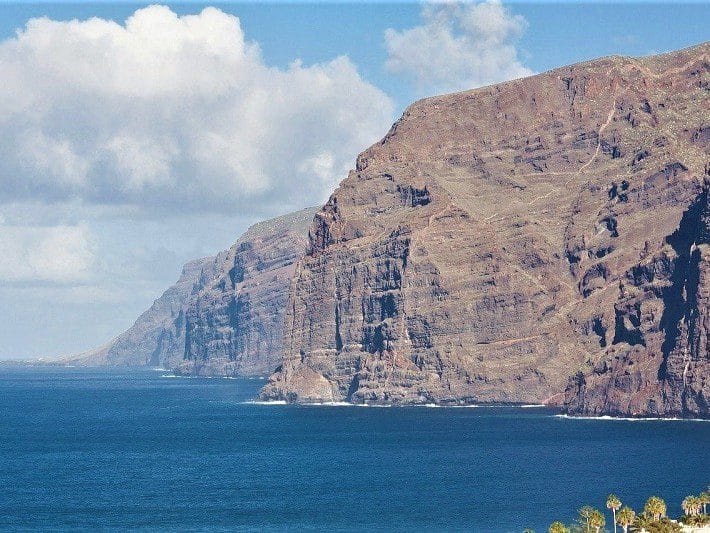
The Cliff of the Giants
Los Gigantes is one of the most emblematic destinations of Santiago del Teide. This impressive cliff, which rises up to 600 meters above sea level, offers spectacular views of the Atlantic Ocean. The rock formation is a result of volcanic processes and erosion, creating a dramatic landscape that attracts nature lovers and photographers alike.
From the viewpoint, you can appreciate the strength of nature and the symmetry of the cliffs, which are surrounded by a deep blue sea. This place is not only a visual point of interest, but also an excellent place for hiking and exploring the surroundings, which are equally impressive.
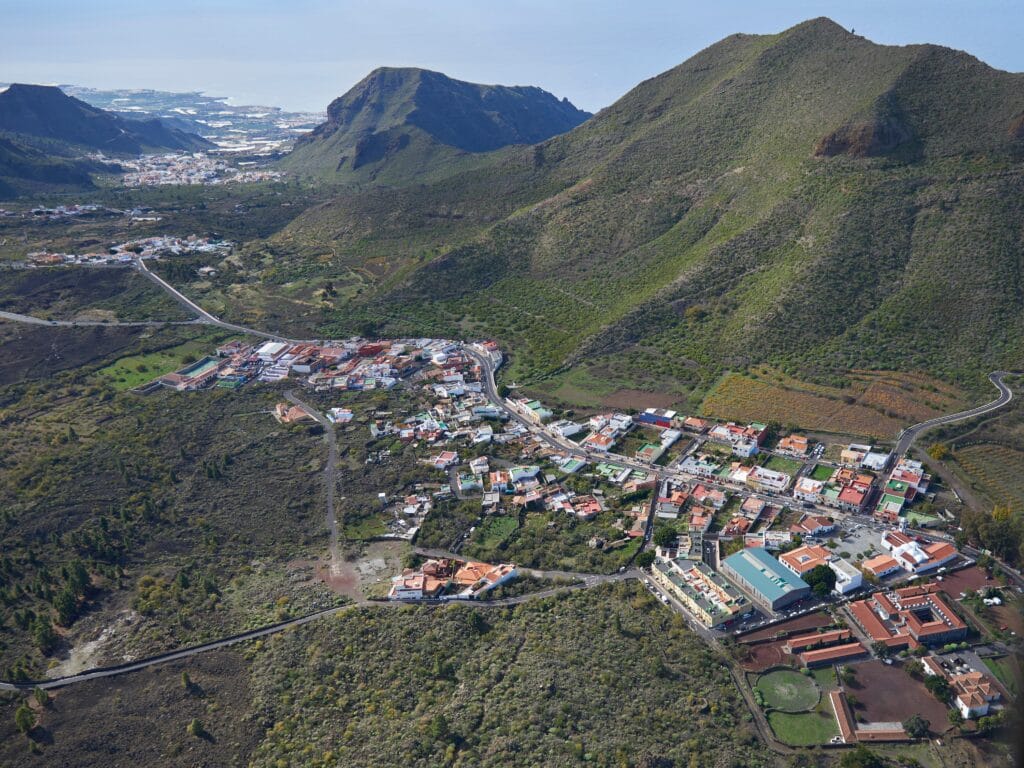
Landscapes and Crops
The landscapes surrounding Santiago del Teide are a testimony to the ecological diversity of the island. Within the municipality, one can observe fertile valleys where vegetables, potatoes and vineyards that produce high quality Canarian wine are grown. This traditional and sustainable agriculture is an important part of the cultural identity of the town.
The mountains and ravines that surround the town create a perfect setting for hiking. The well-marked trails allow you to explore less accessible areas, where nature unfolds in all its splendor. On the other hand, the flora and fauna that inhabit these natural spaces are part of the attraction for those seeking a more ecological tourism.
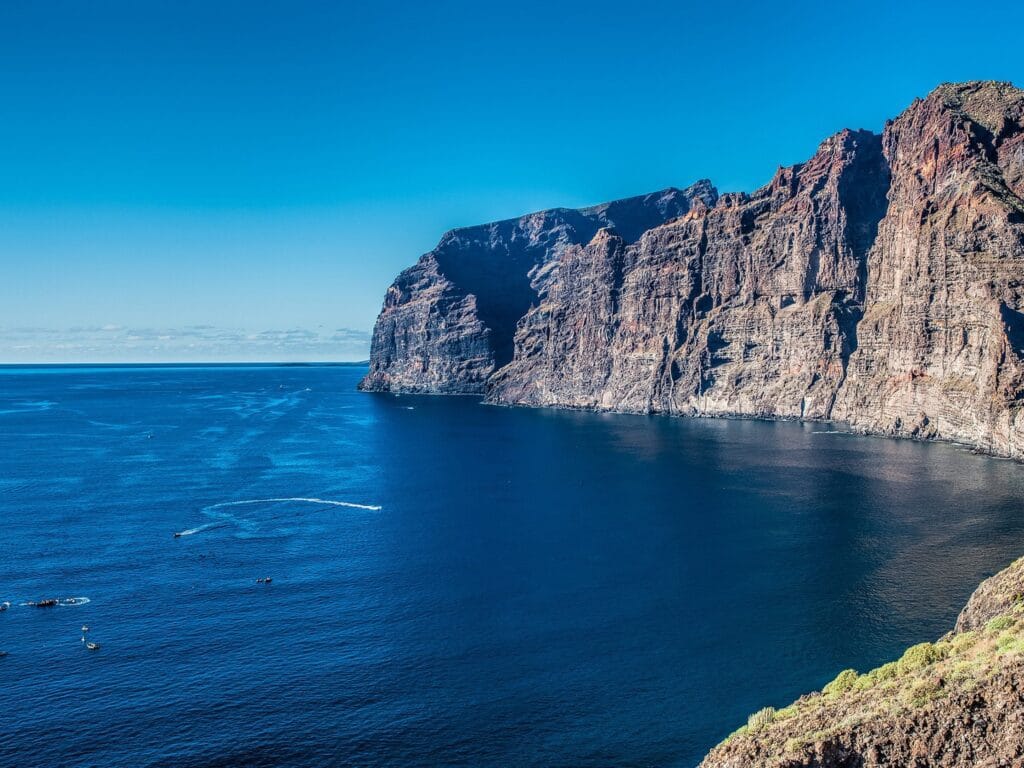
Boat Excursions
Experiencing Santiago del Teide from the sea offers a unique perspective. Boat excursions allow visitors to enjoy coastal scenery and explore the waters surrounding the town. The proximity to the Los Gigantes cliff adds an adventurous component to the trip, with breathtaking views.
Excursions often include stops at strategic locations, where you can dive into the ocean or just relax and enjoy the sun. These outings are a popular way to connect with the surrounding nature and appreciate the marine biodiversity of the area.
Whale Watching
One of the highlights of the boat excursions is whale and dolphin watching. The marine fauna of the region includes dolphins and whales, which are common sights near the coast. These excursions offer the opportunity to observe these majestic animals in their natural habitat, providing an unforgettable experience. The combination of natural beauty and the possibility of interacting with marine life makes this activity a real tourist attraction.
4. La Laguna: History and Culture
San Cristóbal de La Laguna, commonly known as La Laguna, is a town noted for its rich history and valuable cultural heritage. As the first capital of Tenerife, it has witnessed the evolution of the island over the centuries and preserves a legacy that attracts visitors and scholars alike.
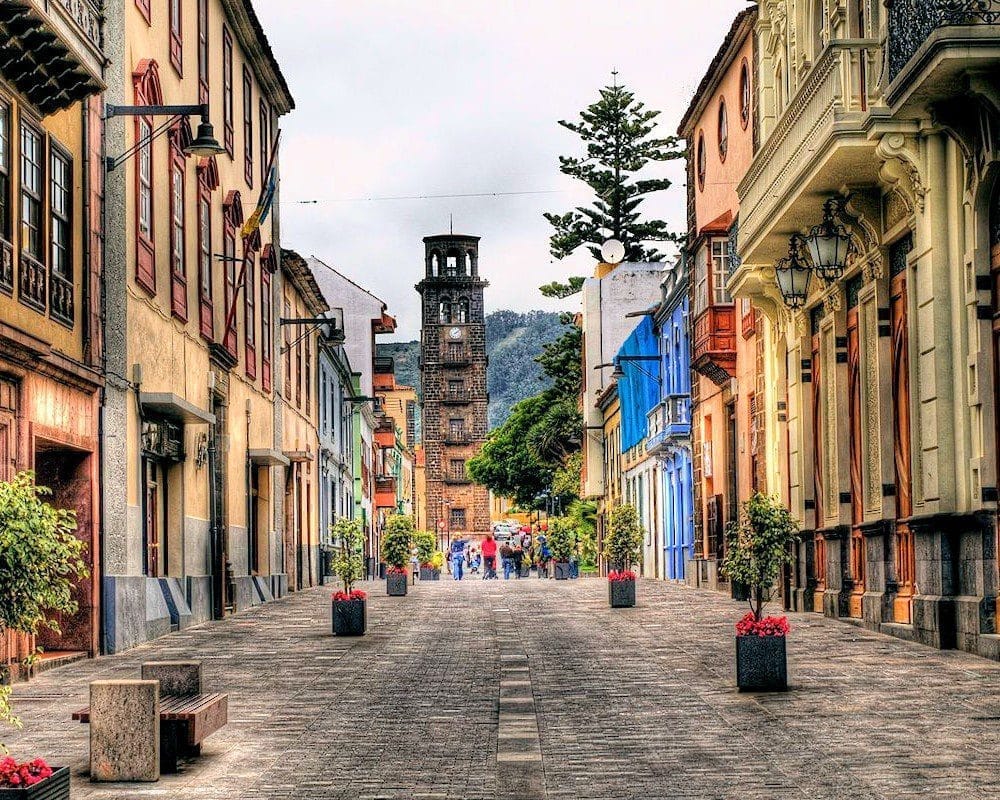
World Heritage Site
In 1999, La Laguna was declared a UNESCO World Heritage Site, recognizing its historic center as an exceptional example of colonial urbanism. Its meticulously planned design, which includes a network of pedestrian streets and plazas, reflects 16th century urban planning, fusing functionality with aesthetics. This recognition enhances the historical and cultural value of the place, protecting its architecture and traditions.
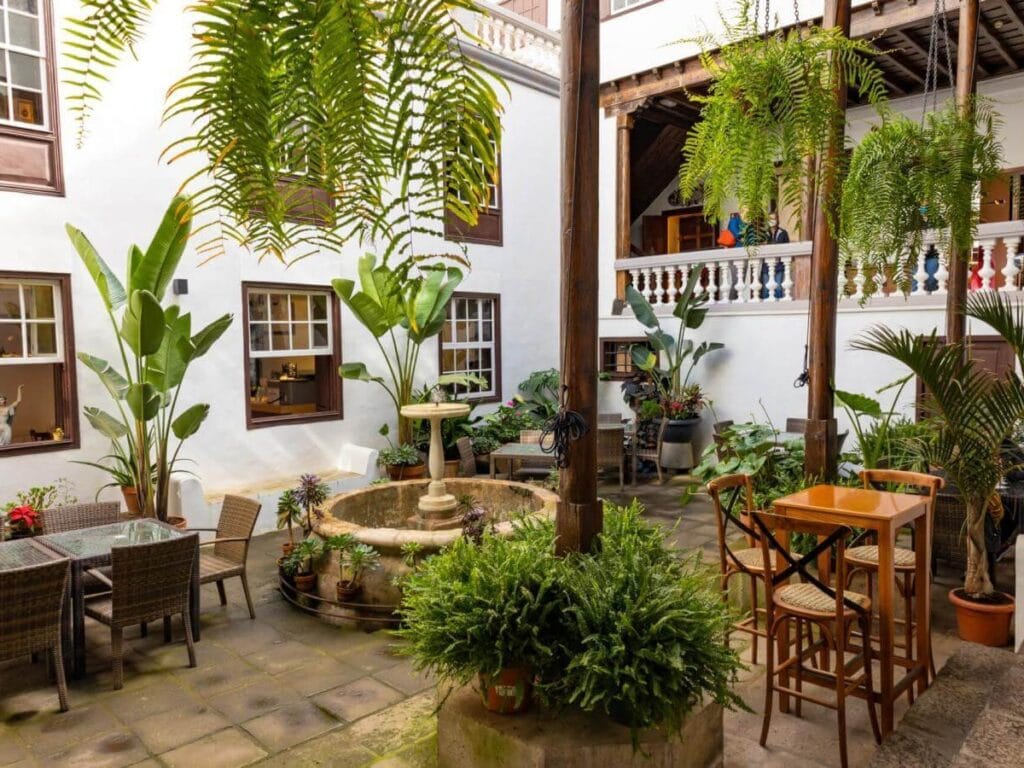
Historic Buildings
La Laguna is home to numerous buildings that bear witness to its glorious past. Among them, the buildings that have managed to preserve their essence over time stand out, showing the richness of its architectural heritage.
Cayetano Gómez Felipe House Museum
The Cayetano Gómez Felipe House Museum is a magnificent example of the traditional architecture of La Laguna. This 18th century building has become a space that pays homage to the Canary culture. Inside, you can appreciate period furniture and objects that narrate the daily life of its inhabitants in the past. In addition, the museum organizes cultural activities and temporary exhibitions that allow a better understanding of the history of the region.
Salazar Palace
The Salazar Palace, another landmark of La Laguna’s history, was built in the 17th century and is an icon of colonial power. This space stands out for its beautiful façade and impressive interior, which preserves rooms of great historical relevance. The palace has also been the scene of important events and houses offices of various cultural institutions, making it a point of both architectural and social interest.
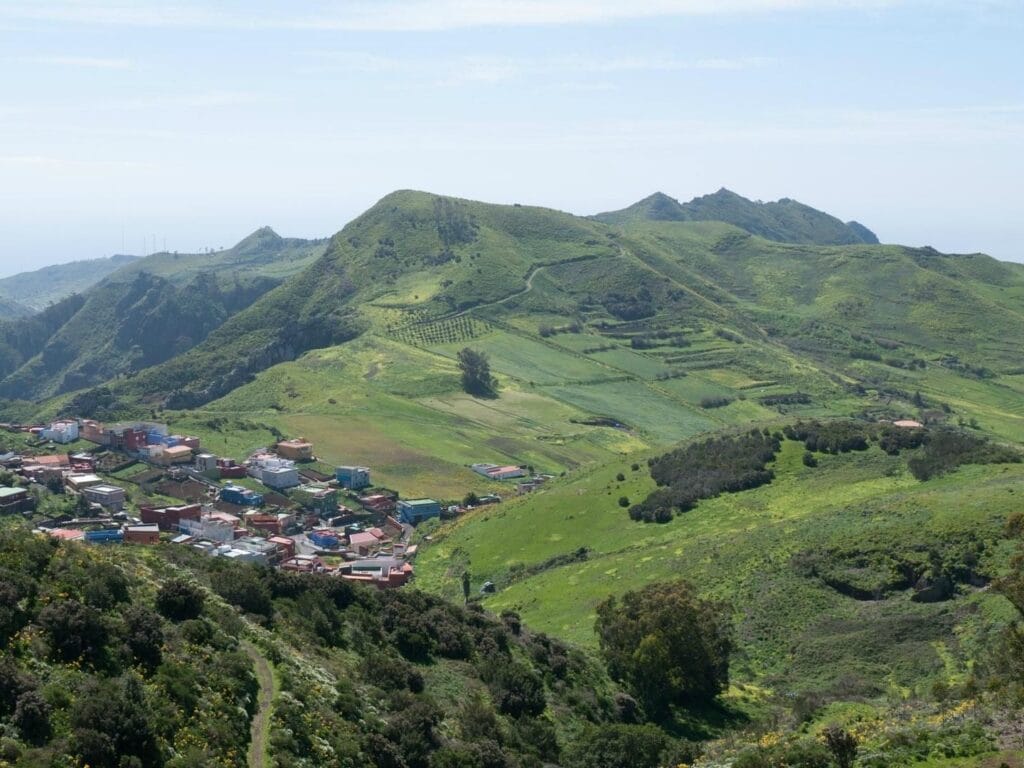
El Mirador de la Jardina
The Mirador de la Jardina offers one of the most impressive views of the city of La Laguna and the surrounding valley. From this point, you can appreciate the historic architecture in its entirety, as well as the beauty of the landscapes that frame it. This viewpoint invites contemplation and has become a meeting place for locals and tourists who wish to enjoy a moment of tranquility in a privileged environment.
5. La Orotava: Color and Tradition
La Orotava, located in the north of Tenerife, is a town noted for its rich cultural tradition and impressive architectural heritage. Its cobblestone streets and the beauty of its colonial balconies tell stories of the Canary Islands' past, reflecting the importance of agriculture and trade on the island.
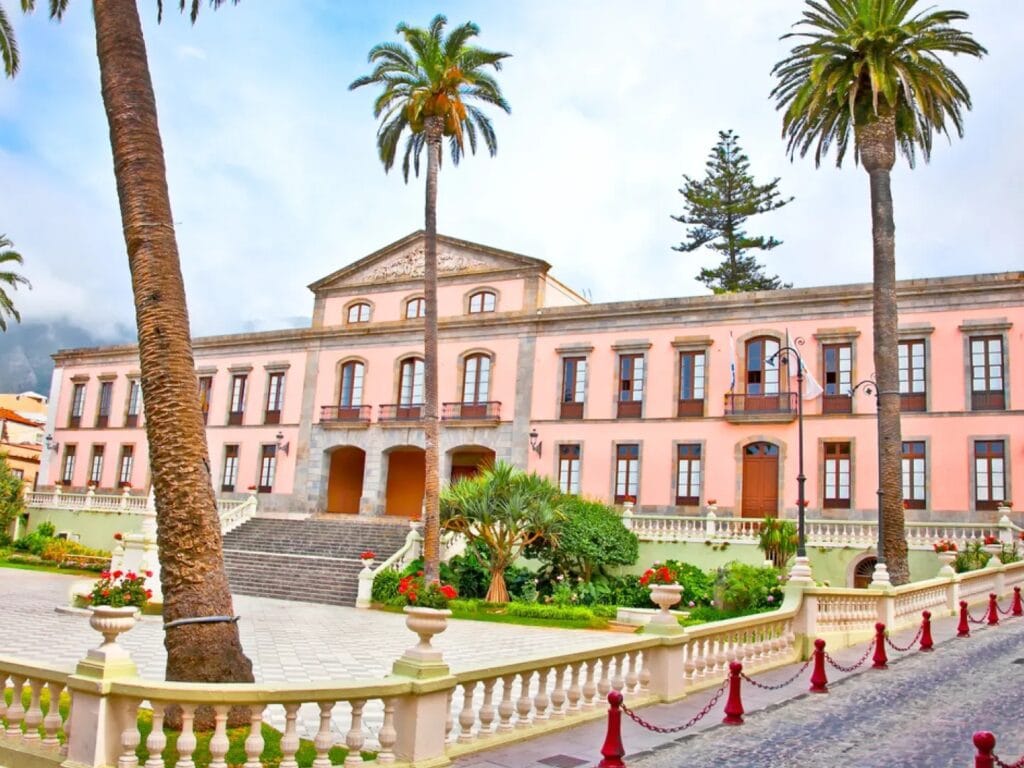
Cobblestone Streets and Colonial Balconies
The historic center of La Orotava is a real haven for lovers of Canarian architecture. Its cobblestone streets, made with local stone, invite you to stroll and discover charming corners.
The colonial balconies, painted in bright colors and adorned with flowers, are a hallmark of the town. This architectural tradition not only beautifies the town, but also shows the influence of Canarian customs over the centuries. These balconies are mainly made of wood, which gives a special character to each facade.
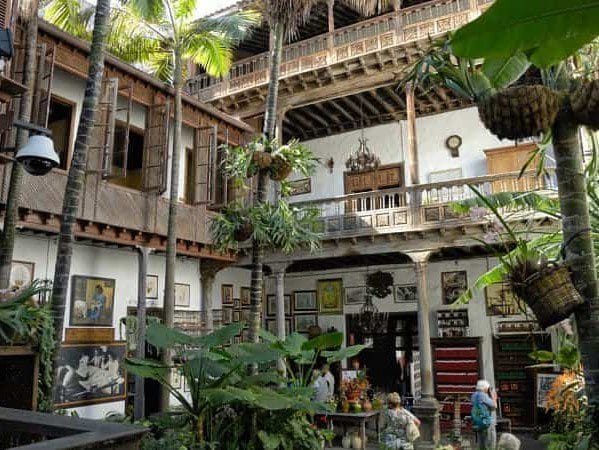
Outstanding Monuments
La Orotava is home to several monuments that reflect its history and culture. Among them, there are emblematic buildings that contribute to the rich heritage of the town.
Casa de los Balcones
La Casa de los Balcones is one of the most emblematic places in La Orotava. This 17th century building stands out for its impressive architecture, with beautiful carved wooden balconies. Inside, you can find exhibitions of Canarian handicrafts, as well as typical products of the island. This house offers a glimpse into the lifestyle of wealthy Canarian families in colonial times.
The Casa de los Balcones also houses a small museum that narrates the history of the city and its evolution over the years.
Church of Our Lady of the Conception
The Church of Nuestra Señora de la Concepción is another of the outstanding monuments of La Orotava. Built in the 18th century, it is considered one of the best examples of religious architecture on the island. Its baroque façade and imposing bell tower are visible from various points of the town.
Inside the church, visitors can admire various altarpieces and works of art that reflect the religious devotion of the community. The church is not only a place of worship, but also plays an important role in the local festivities and cultural life of the village.
6. Icod de los Vinos: The Millenary Dragon Tree and Wine Traditions
Icod de los Vinos is a town that combines history, nature and wine culture. It is famous for its emblematic Drago Milenario, which represents the rich Canarian heritage and attracts visitors from different corners. This place is also a reference in the production of local wine, which adds an additional attraction to your visit.
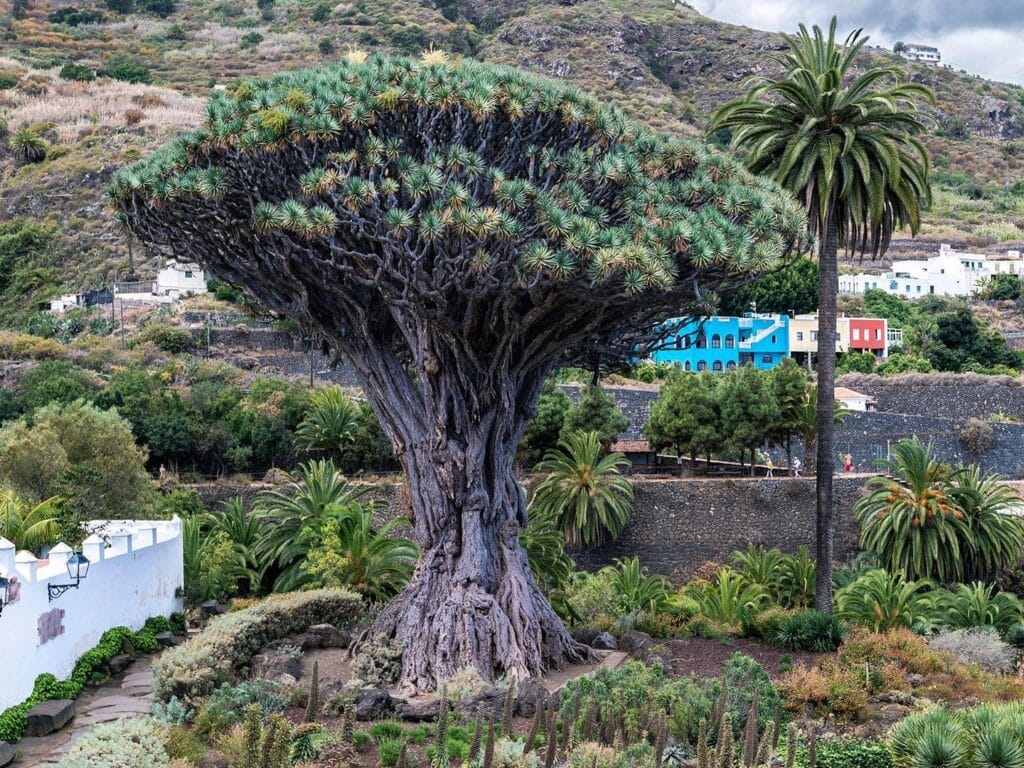
The Millennial Dragon Tree
The Drago Milenario is one of the main attractions of Icod de los Vinos and a symbol of Tenerife’s natural heritage. This tree, estimated to be over a thousand years old, is an impressive specimen that can reach a height of up to 18 meters. Its trunk, robust and twisted, has been the subject of legends and myths that have endured over the centuries.
A park has been created around the Millennium Dragon Tree that allows visitors to appreciate the magnificence of this tree in a natural environment, surrounded by other plant species, making it an ideal place to enjoy the biodiversity of the Canary Islands.
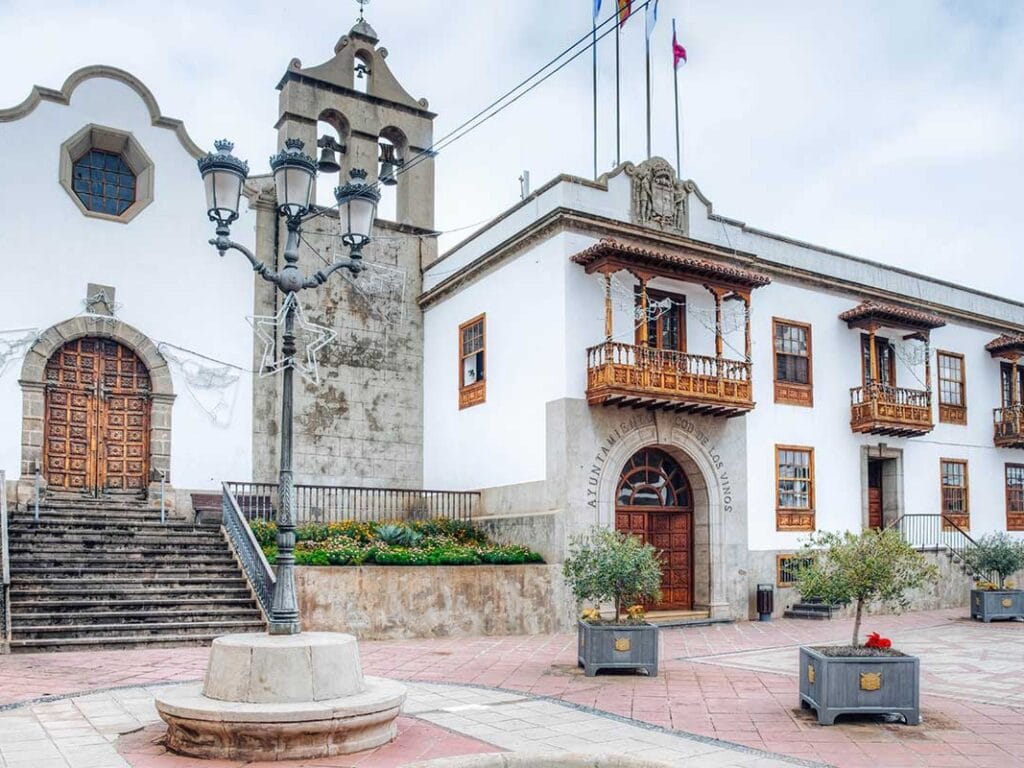
Cobblestone Streets and Plazas
The streets of Icod de los Vinos are a living testimony of its history and tradition. Immersed in a rural atmosphere, the cobblestone streets and squares of the town invite you to stroll and discover its charm. Every corner of Icod is an open window to the past, with historic buildings that keep the essence of Canarian architecture.
- The Plaza de la Candelaria, a meeting place in the heart of town, full of life and surrounded by charm.
- The side streets are adorned with wooden balconies, characteristic of the Canarian tradition.
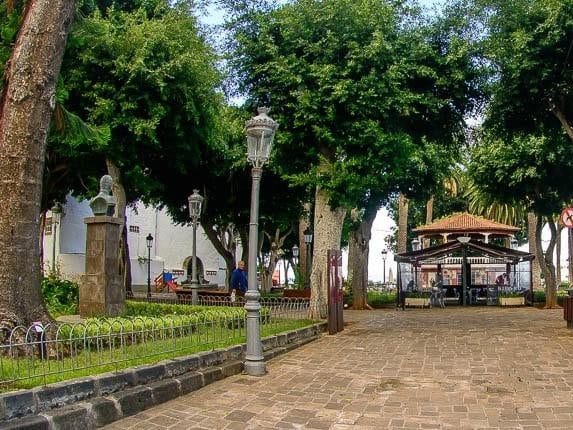
Wine Culture
Icod de los Vinos is not only known for its ancient dragon tree, but also for its rich winemaking tradition. The town’s location, in an area with a favorable climate and fertile soils, contributes to the production of quality wines. Vineyards are an integral part of the local landscape, and the wine culture is deeply rooted in the community.
Wineries and Tastings
Several wineries in Icod de los Vinos offer the opportunity to learn about the Canarian winemaking process up close. These wineries allow visitors to experience the winemaking tradition and participate in tastings that show the variety of unique flavors that each wine can offer.
- Visits to the wineries not only include wine tastings, but also tours of the facilities where the winemaker’s work can be appreciated.
- You can find red, white and rosé wines, each with its own particular characteristics, obtained from native grape varieties.
- Some wineries even combine wine tasting with local products, such as cheeses and cured meats, creating a complete gastronomic experience.
7. Garachico: History and Nature
Garachico, a town full of charm and character, is famous for its rich history and stunning natural landscapes. It was once the most important port of Tenerife, and its historical legacy can be seen in the monuments that adorn its streets.
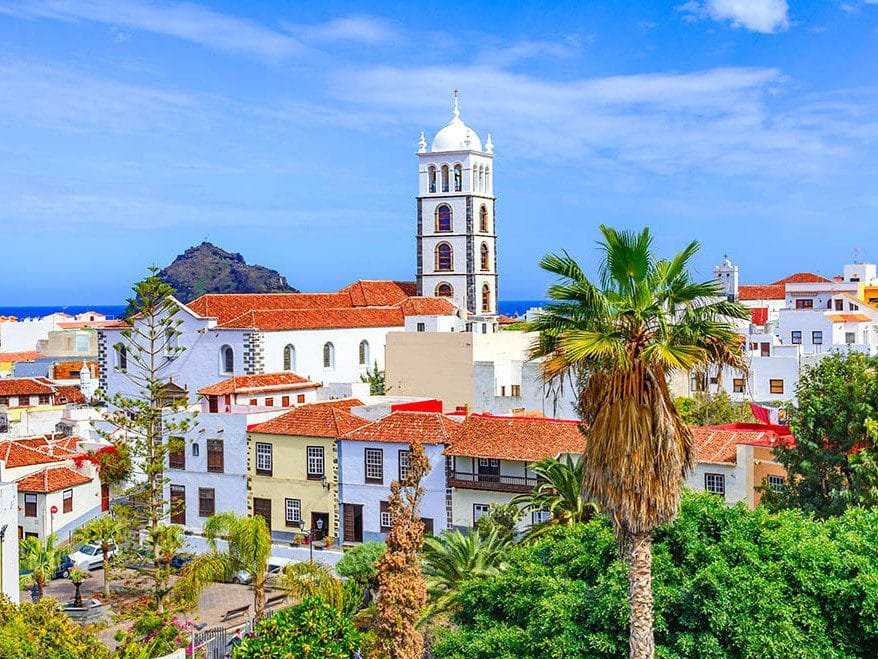
Historic Buildings
In Garachico, history is manifested through its emblematic buildings, which reflect the splendor of past times. Among them, the Church of Santa Ana and the Fortress of San Miguel stand out, which are witnesses of the cultural and architectural evolution of the area.
Santa Ana Church
The Church of Santa Ana is one of the main religious temples of Garachico. Built in the 16th century, this church stands out for its Canarian style architecture, with an impressive volcanic stone façade. Inside, it houses a valuable artistic heritage, which includes images of great historical and religious relevance. The church is not only a place of worship, but also a cultural center where various festivities are held throughout the year, attracting both locals and visitors.
San Miguel Fortress
The Fortaleza de San Miguel, erected at the end of the 16th century, was built to protect the port of Garachico from possible pirate attacks. This imposing building is located in a strategic location and offers spectacular views of the ocean. Over the centuries, it has been restored and preserved, allowing visitors to appreciate its defensive structure and learn about its important role in the island’s history. The fortress is a symbol of the ingenuity and resilience of Garachico’s inhabitants in the face of past adversities.
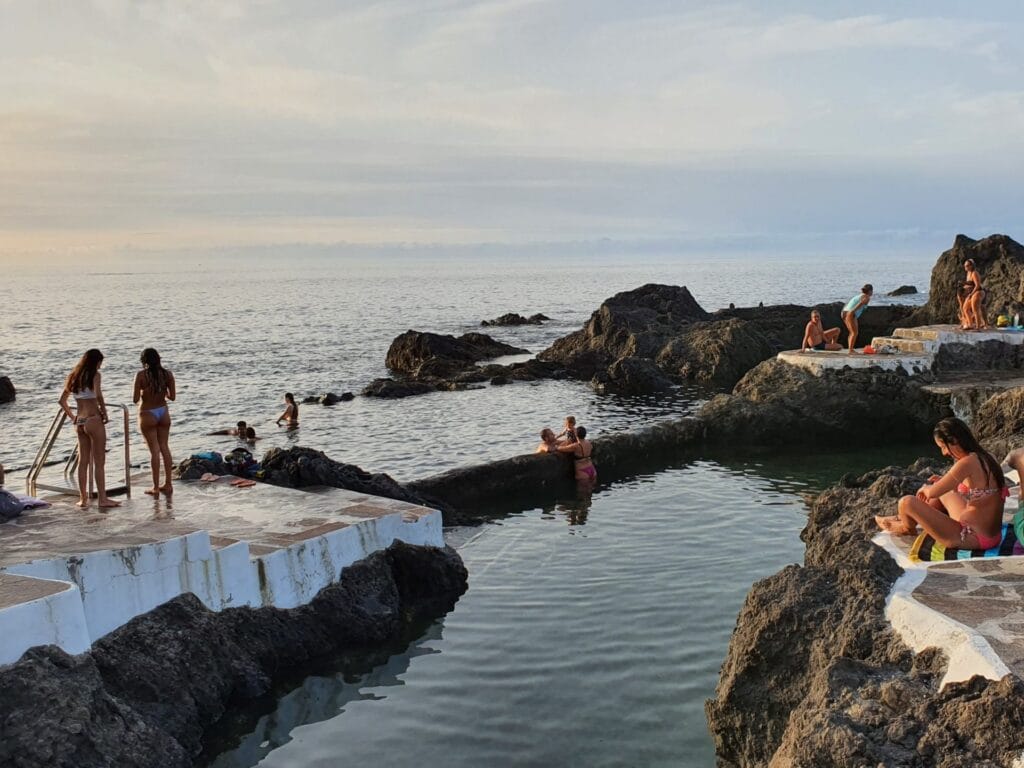
Natural Pools of El Caletón
One of the natural treasures of Garachico are the natural pools of El Caletón, formed by the cooling of lava after the eruption of 1706. These unique formations are a must-see attraction, where visitors can enjoy a swim in a privileged environment, surrounded by cliffs and the Atlantic sea. They are an ideal refuge for those seeking to relax and connect with nature in a magical place.
El Caletón is perfect for sea lovers, who can contemplate how the waves break against the rocks and create a unique natural spectacle. This space is not only a place for recreation, but also a stage where you can observe various marine species and enjoy the beauty of the surroundings. The pools are accessible and have been conditioned to ensure the safety of bathers, making them an ideal place to enjoy a sunny day in Tenerife.
8. Taganana: Nature in its Pure State
Taganana is a charming village located in the Anaga Rural Park, known for its stunning natural environment. This enclave offers an authentic experience and is the perfect place to enjoy the beauty of Canarian nature.
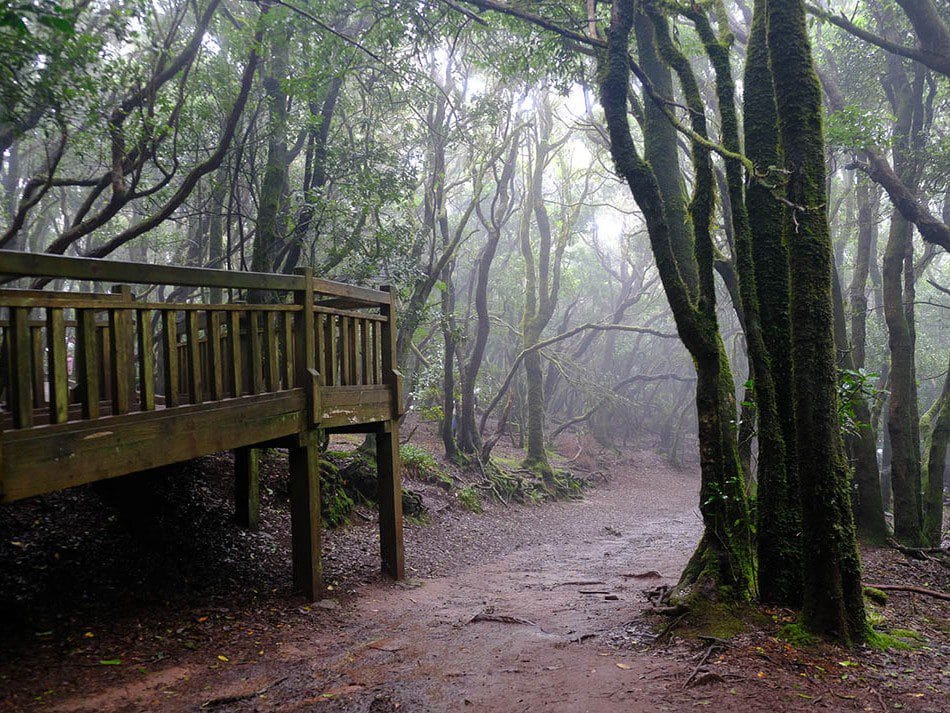
Anaga Rural Park
The Anaga Rural Park is a protected area that encompasses a variety of unique landscapes, from rugged mountains to lush laurel forests. This park is not only a refuge for numerous species of flora and fauna, but also offers opportunities for outdoor activities.
The diverse ecosystem of Anaga is home to many endemic species and is characterized by its breathtaking panoramic views. Here, visitors can enjoy routes that will take them through landscapes of great beauty, where lush vegetation and hidden corners become a visual delight.
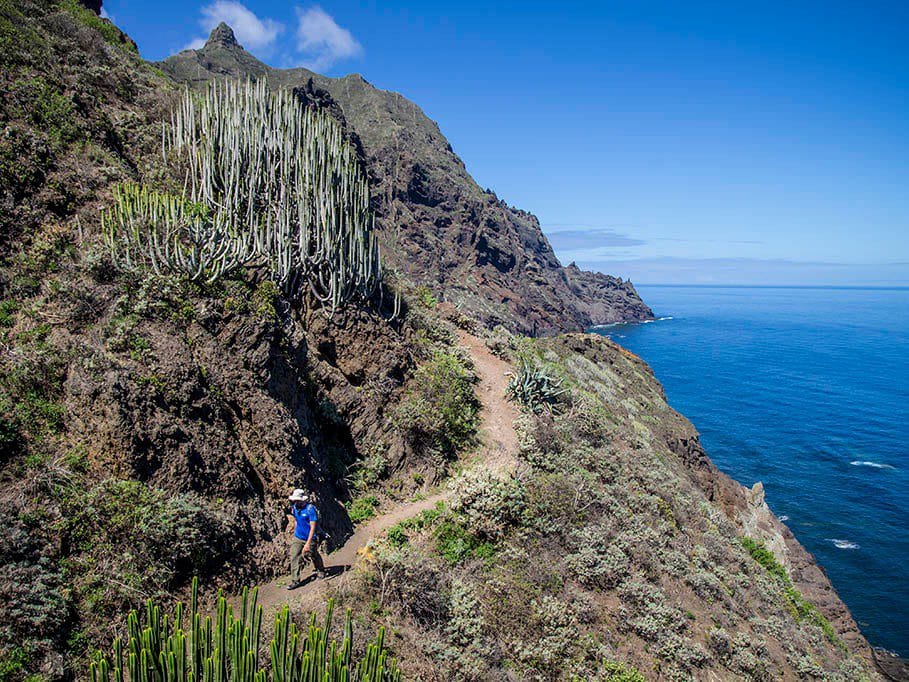
Hiking and Mountains
Taganana offers a series of hiking trails that stand out for their spectacular nature and varied difficulties. The mountains surrounding the town are ideal for trekking lovers, offering trails with different levels of difficulty. Some of the most popular routes include:
Benijo Beach Route
This trail takes hikers to the stunning Benijo beach, famous for its natural beauty and rugged scenery. The route offers spectacular views of the Atlantic Ocean and rock formations emerging from the water.
Camino de las Fincas
This route is less demanding and allows you to enjoy the views of the crops and agricultural terraces. Along the way, you can contemplate the traditional lifestyle of the farmers in the area.
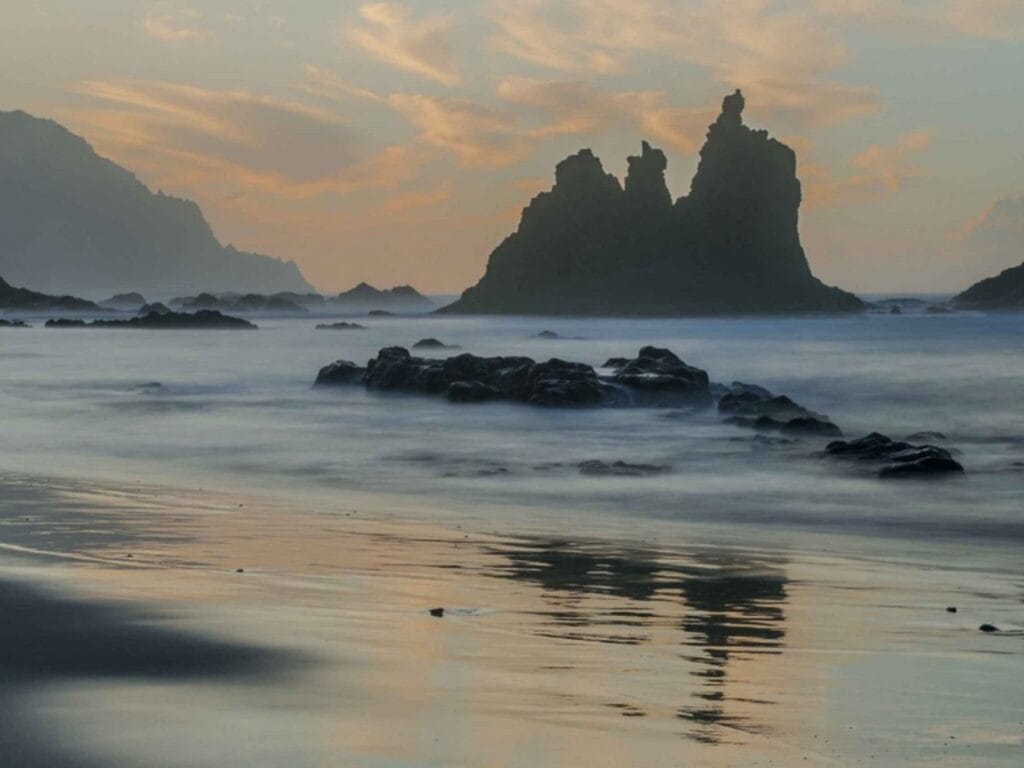
Volcanic Sand Beaches
Taganana also stands out for its volcanic sand beaches, which provide an impressive contrast with the intense blue of the sea. Almáciga beach is one of the most renowned and has become a popular destination for swimmers and surfers.
The coast of Taganana offers a natural and unspoiled environment, ideal for those looking to escape the hustle and bustle of tourism. The waves and dramatic landscape create a perfect setting for enjoying a day in the sun or watching the sunset, which paints the sky in shades of orange and violet.
Almáciga Beach
An ideal destination for surfers, Almáciga beach offers favorable conditions and a vibrant atmosphere. Watch the swells and enjoy the scenic beauty that surrounds it.
Benijo Beach
With its breathtaking views and tranquility, Benijo is perfect for those seeking a more relaxed atmosphere. Sunsets here are especially memorable.
9. El Sauzal: Sights and Heritage
El Sauzal is a municipality noted for its natural beauty and rich architectural heritage. Located in the north of Tenerife, it offers breathtaking panoramic views that attract both residents and visitors. The combination of its cultural heritage and the surrounding nature make this place a very attractive destination.
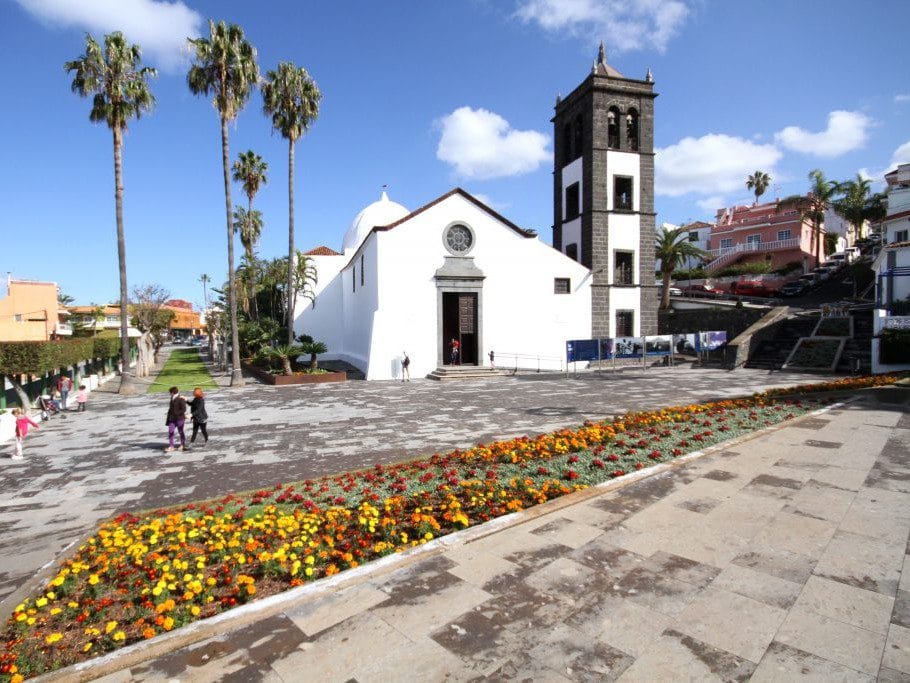
St. Peter the Apostle Church
The Church of San Pedro Apostle, built in the 16th century, is one of the main emblems of El Sauzal. This church presents an architectural style that mixes elements of the Canary Islands tradition with baroque influences. Its facade, made of volcanic stone, stands out for its beauty and for the ornamental details that adorn its main door.
The interior is equally impressive, with a high altar rich in gilding and works of religious art that reflect the spirituality of the place. Visitors have the opportunity to contemplate images and altarpieces dating from past eras, as well as enjoy the exceptional acoustics that allow for concerts and cultural events.
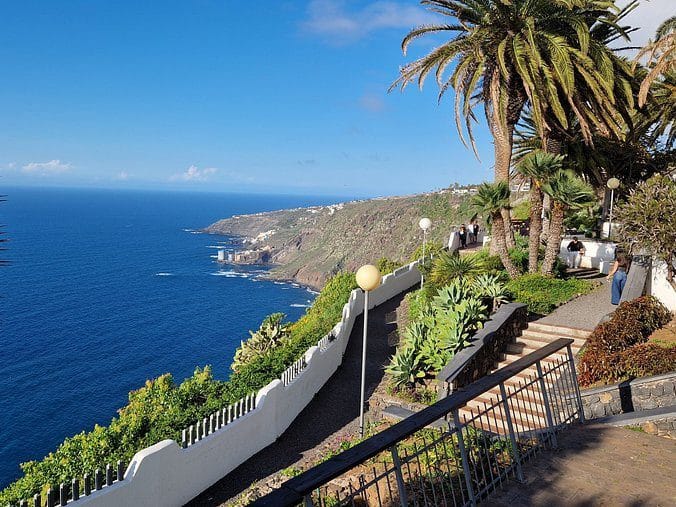
Panoramic viewpoints
El Sauzal is home to several viewpoints that offer spectacular views of the coast and the mountainous landscape of the island. These viewpoints are ideal for those looking to capture the natural essence of Tenerife.
- Mirador de La Corona: With views stretching from the Atlantic Ocean to the mountains, this viewpoint is one of the most popular among visitors. Its setting invites quiet walks and moments of reflection in the midst of nature.
- Mirador de El Lagar: It offers a unique perspective of the vineyards and agricultural fields that characterize the region. It is a perfect place to watch the sunset while enjoying a good Canarian wine.
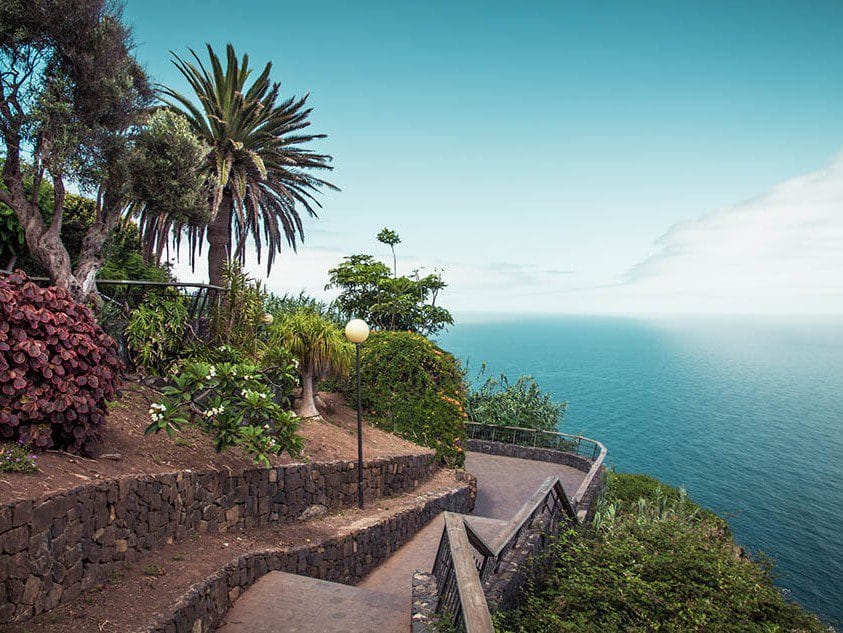
Los Lavaderos Park
Los Lavaderos Park is a natural space that stands out for its beauty and peaceful surroundings. Previously, this place was used by the women of the town to wash clothes, thanks to the availability of fresh water in the area. Today, it has been transformed into an attractive park where you can enjoy peace and nature.
The park has several hiking trails that allow visitors to explore its native flora and fauna. In addition, there are rest areas and picnic tables, where visitors can enjoy a day outdoors with family or friends. Los Lavaderos also offers a natural setting in which vegetation and birdsong become the protagonists, creating an atmosphere of tranquility.
10. Candelaria: Center of Devotion
Candelaria is a picturesque coastal town known for its religious importance and tranquil atmosphere. It is home to the famous Basilica of Our Lady of Candelaria, a key place in the culture and devotion of Tenerife.
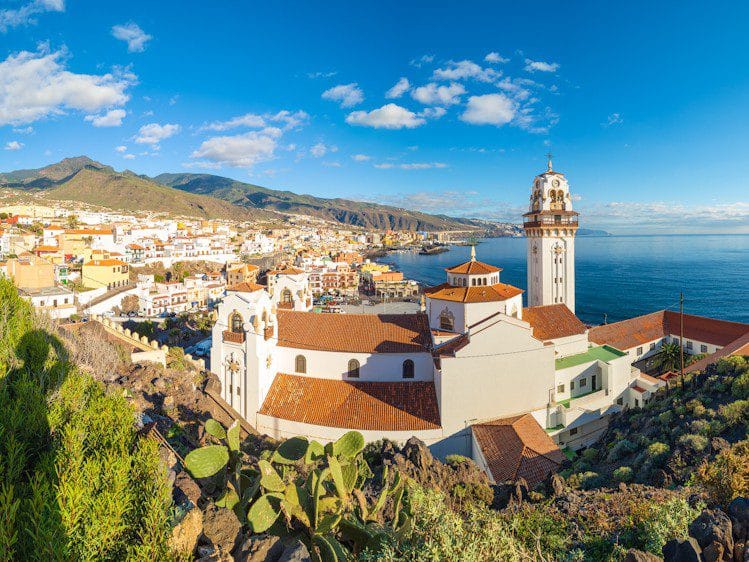
The Patron Saint of the Canary Islands: Our Lady of Candelaria
In Candelaria, the devotion to Our Lady of Candelaria, the Patron Saint of the Canary Islands, is palpable in every corner. The image of the Virgin, found on the beach by the aborigines, is the object of fervor and pilgrimages.
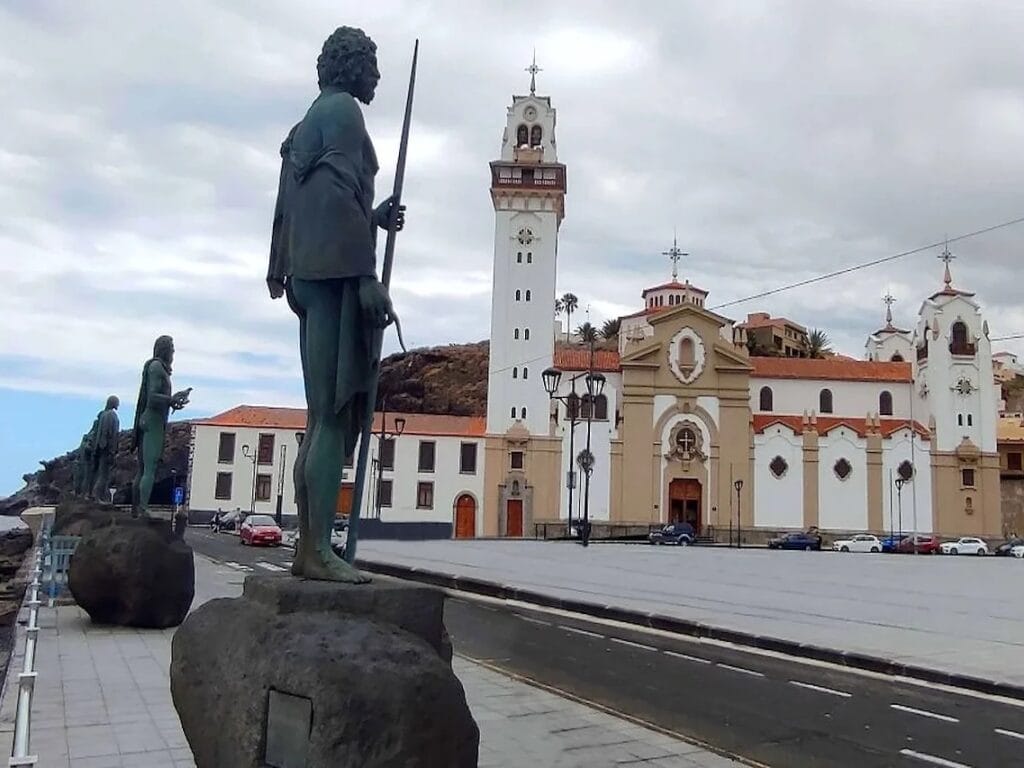
The Basilica and its History
The Basilica of Our Lady of Candelaria is a religious landmark of the island. Built in the 20th century, it houses the image of the Virgin and is the site of important religious celebrations and events.
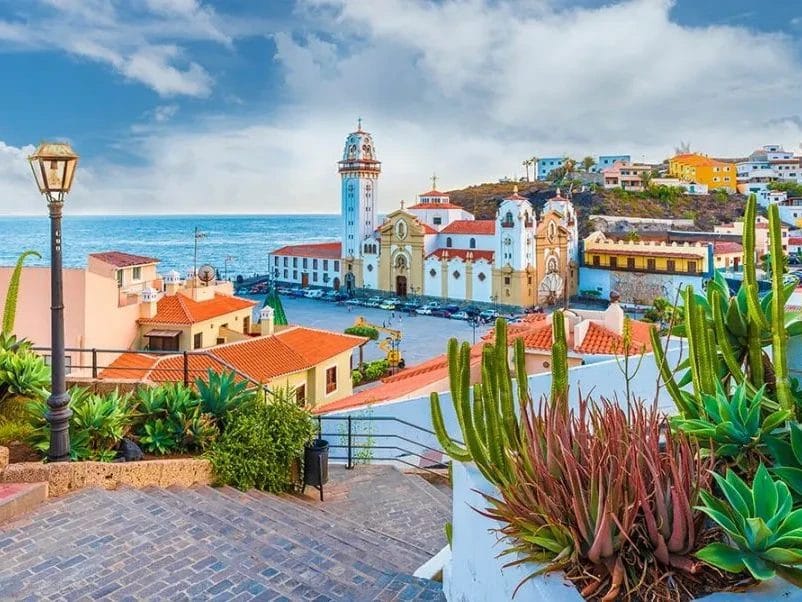
Stroll through its streets and squares
To walk the streets of Candelaria is to enter into its religious and cultural atmosphere. The squares and public spaces invite reflection and an encounter with the history and tradition of the Canary Islands.
Religious Monuments
- The Basilica and Sanctuary of the Virgin of Candelaria
- The Basilica Tower, architectural symbol of the locality
Public Art
- Sculptures and artistic works in honor of the Virgin of Candelaria
- Murals and paintings that narrate the history and devotion of the Canarian people.
11. El Médano: The Town of the Wind, the Beach and the Good Rolls
El Médano is a lively coastal town famous for its golden sandy beaches and perfect conditions for windsurfing and kitesurfing. Its relaxed atmosphere and surfing spirit make it a popular destination for travelers and locals alike.
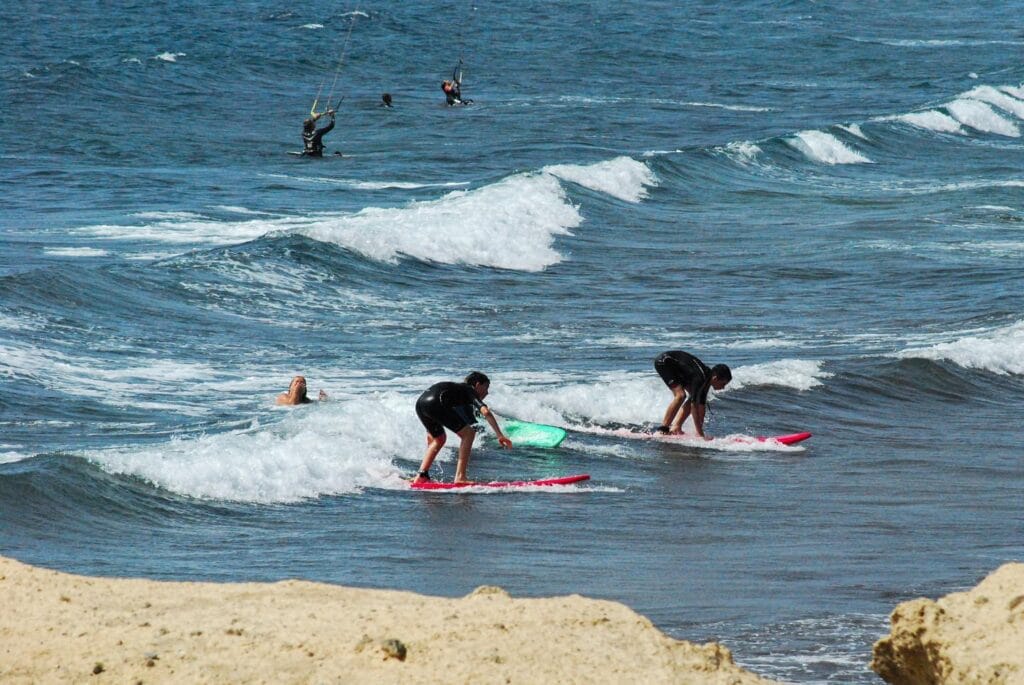
Windsurfing and Kitesurfing Paradise
El Médano is internationally recognized for its constant winds, which makes it one of the best spots for water sports in Europe.
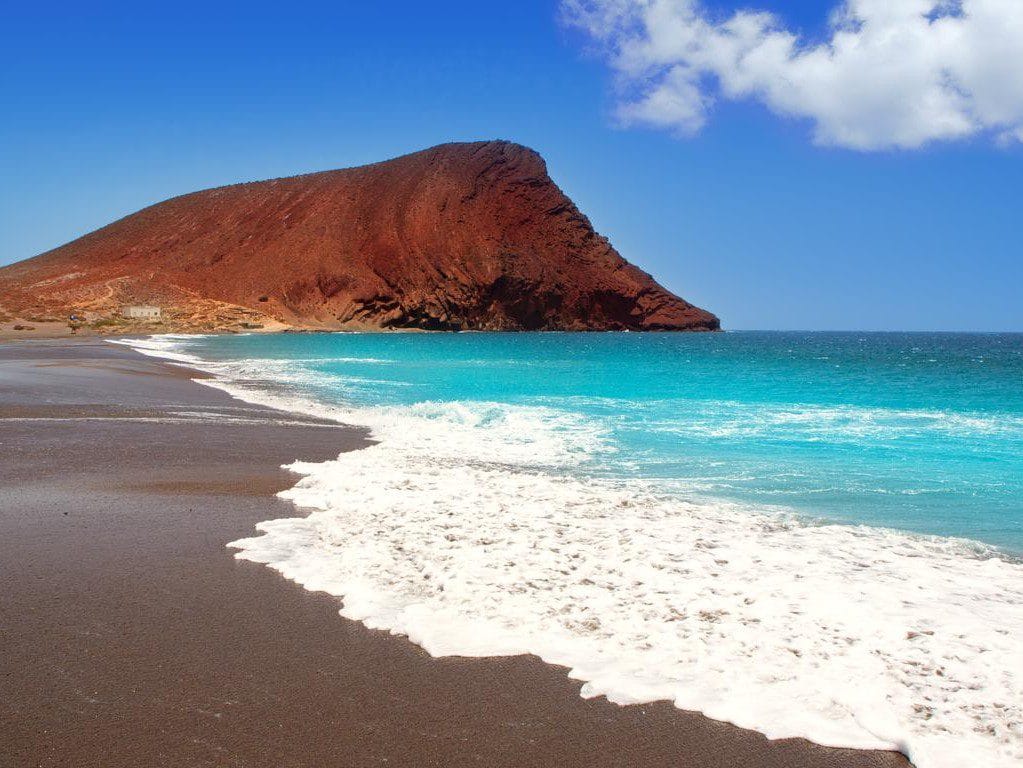
Natural Beaches and Charming Trails
From the famous Playa del Médano to the Montaña Roja, this town offers unique natural surroundings ideal for walking, sunbathing or simply disconnecting.
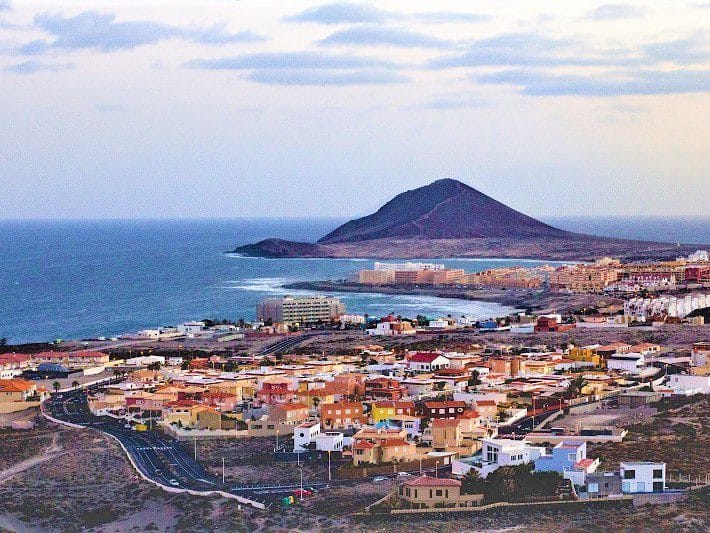
Bohemian Life and Local Environment
Charming cafes, street markets, street artists and a laid-back pace of life give El Medano a unique vibe that appeals to travelers and locals alike.
12. Chamorga: Rural Authenticity
Chamorga is a charming village that offers an authentic rural experience in Tenerife. Located in the Anaga Rural Park, this place stands out for its natural beauty and traditional Canarian architecture.
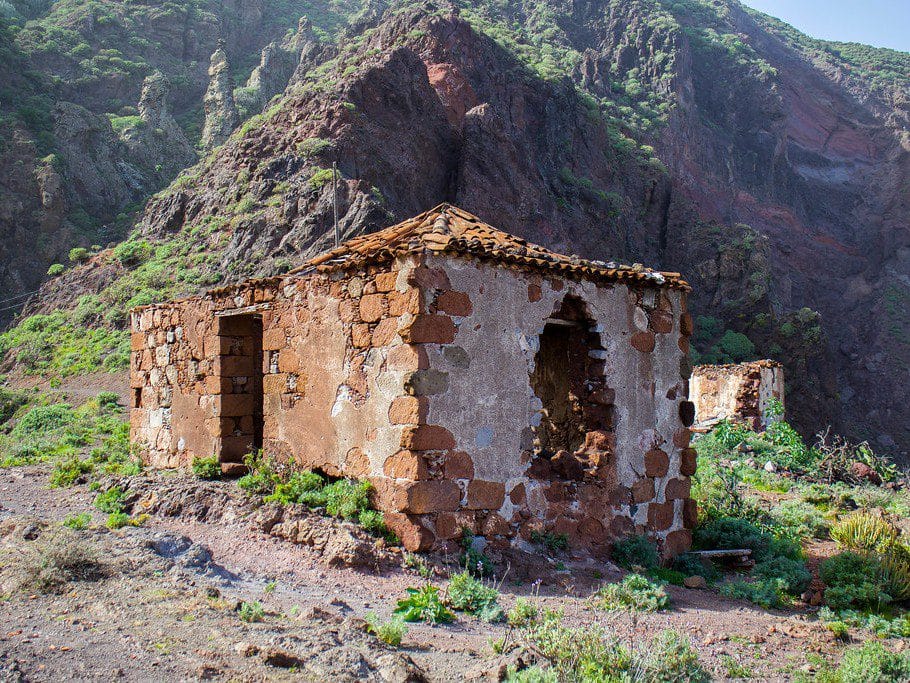
Canarian Rural Architecture
The village of Chamorga is composed of masonry houses, with tile roofs that preserve the essence of Canarian architecture. These buildings are often adorned with wooden balconies, which gives them a distinctive and cozy character. As you stroll through its narrow streets, you can appreciate how the structures have been carefully maintained over time.
The layout of the homes, some with orchards and gardens, reflects the inhabitants’ connection to the land. This farming tradition not only provides a sustainable lifestyle, but also creates a warm, family-like atmosphere, where the community works together to preserve its heritage.
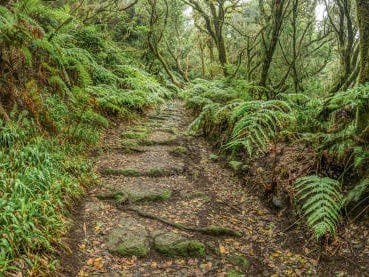
Trails and Virgin Nature
Chamorga is surrounded by mountains and forests, creating an ideal natural setting for hiking. There are several trails that allow you to explore the wild beauty of the place, offering routes that vary in difficulty and duration. These trails lead to spectacular viewpoints and hidden corners, each with its own charms. The local flora and fauna are the true protagonist, providing a unique experience for nature lovers.
- Hiking trails that discover laurel forest landscapes, a type of humid forest characteristic of the region.
- Possibility to watch native birds and enjoy the tranquility offered by the natural environment.
- Access to remote and almost virgin beaches, perfect for those looking to disconnect from the hustle and bustle.
